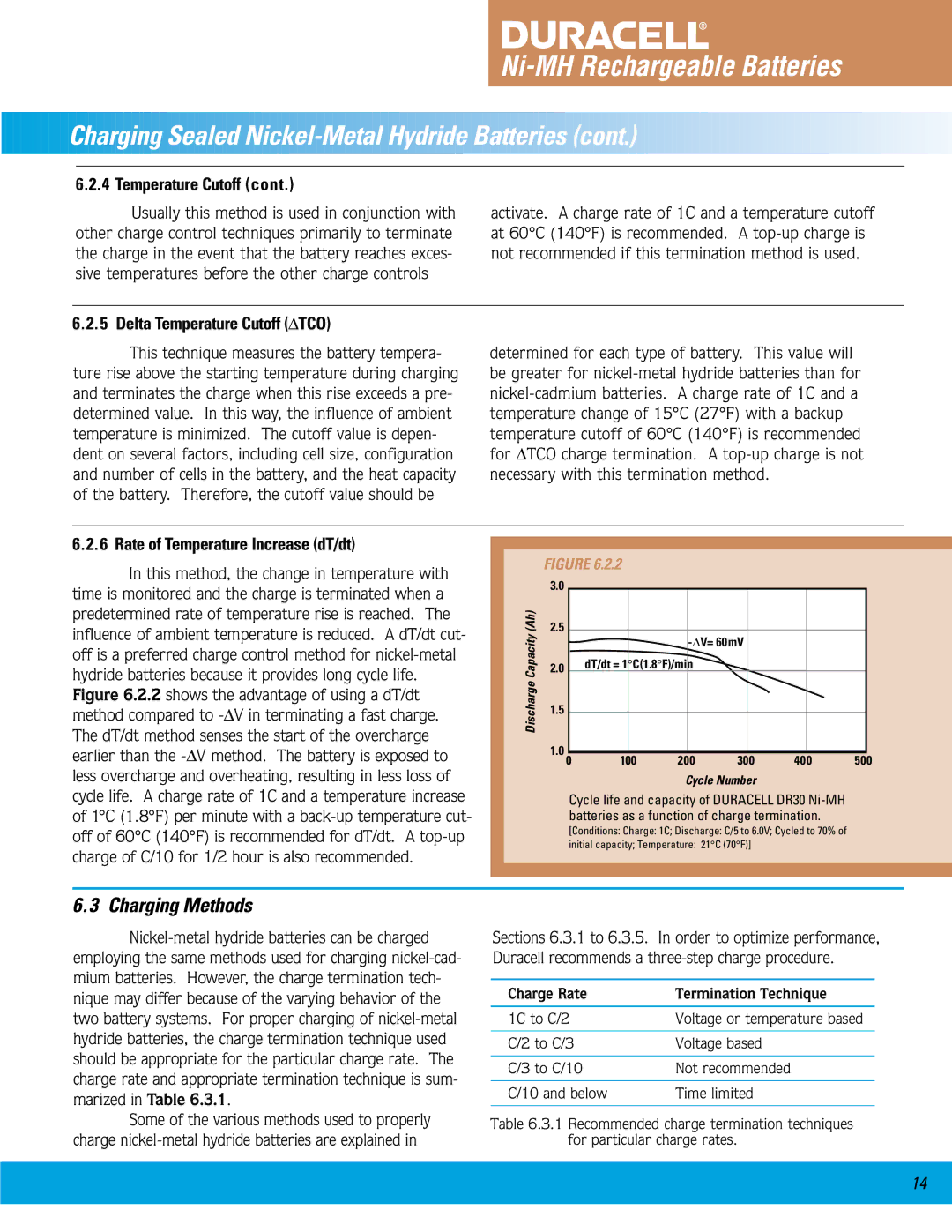
Ni-MH Rechargeable Batteries






 Charging
Charging
 Sealed
Sealed Nickel-Metal
 Hydride
Hydride Batteries
Batteries (cont.)
































6.2.4 Temperature Cutoff (cont.)
Usually this method is used in conjunction with other charge control techniques primarily to terminate the charge in the event that the battery reaches exces- sive temperatures before the other charge controls
activate. A charge rate of 1C and a temperature cutoff at 60°C (140°F) is recommended. A
6.2.5 Delta Temperature Cutoff (ΔTCO)
This technique measures the battery tempera- ture rise above the starting temperature during charging and terminates the charge when this rise exceeds a pre- determined value. In this way, the influence of ambient temperature is minimized. The cutoff value is depen- dent on several factors, including cell size, configuration and number of cells in the battery, and the heat capacity of the battery. Therefore, the cutoff value should be
determined for each type of battery. This value will be greater for
6.2.6 Rate of Temperature Increase (dT/dt)
In this method, the change in temperature with time is monitored and the charge is terminated when a predetermined rate of temperature rise is reached. The influence of ambient temperature is reduced. A dT/dt cut- off is a preferred charge control method for
Discharge Capacity (Ah)
FIGURE 6.2.2
3.0
2.5
2.0dT/dt = 1°C(1.8°F)/min
1.5
1.0
0 | 100 | 200 | 300 | 400 | 500 |
|
| Cycle Number |
|
| |
Cycle life and capacity of DURACELL DR30
[Conditions: Charge: 1C; Discharge: C/5 to 6.0V; Cycled to 70% of
initial capacity; Temperature: 21°C (70°F)]
6.3 Charging Methods
Some of the various methods used to properly charge
Sections 6.3.1 to 6.3.5. In order to optimize performance, Duracell recommends a
Charge Rate | Termination Technique |
1C to C/2 | Voltage or temperature based |
|
|
C/2 to C/3 | Voltage based |
|
|
C/3 to C/10 | Not recommended |
|
|
C/10 and below | Time limited |
|
|
Table 6.3.1 Recommended charge termination techniques for particular charge rates.
14
